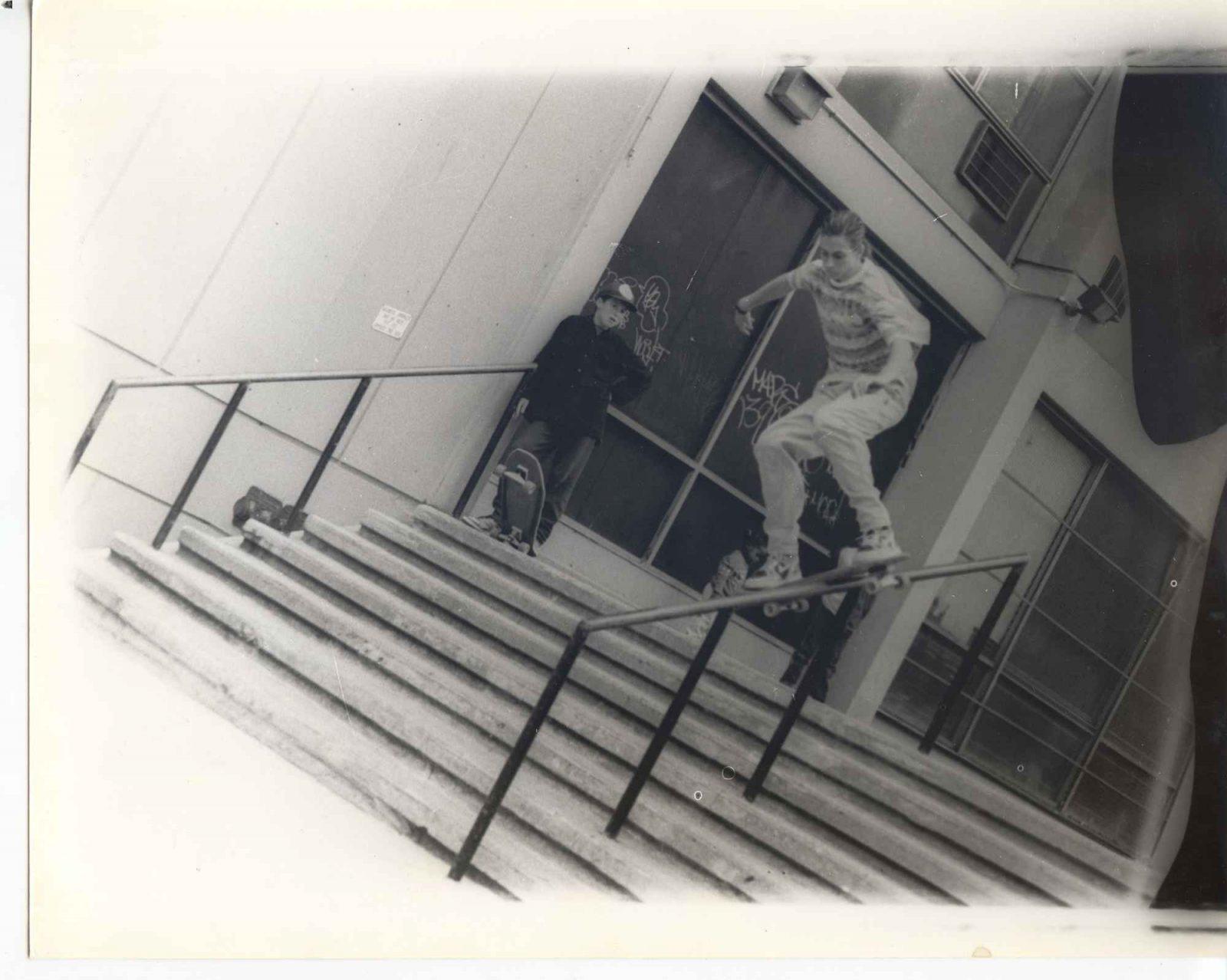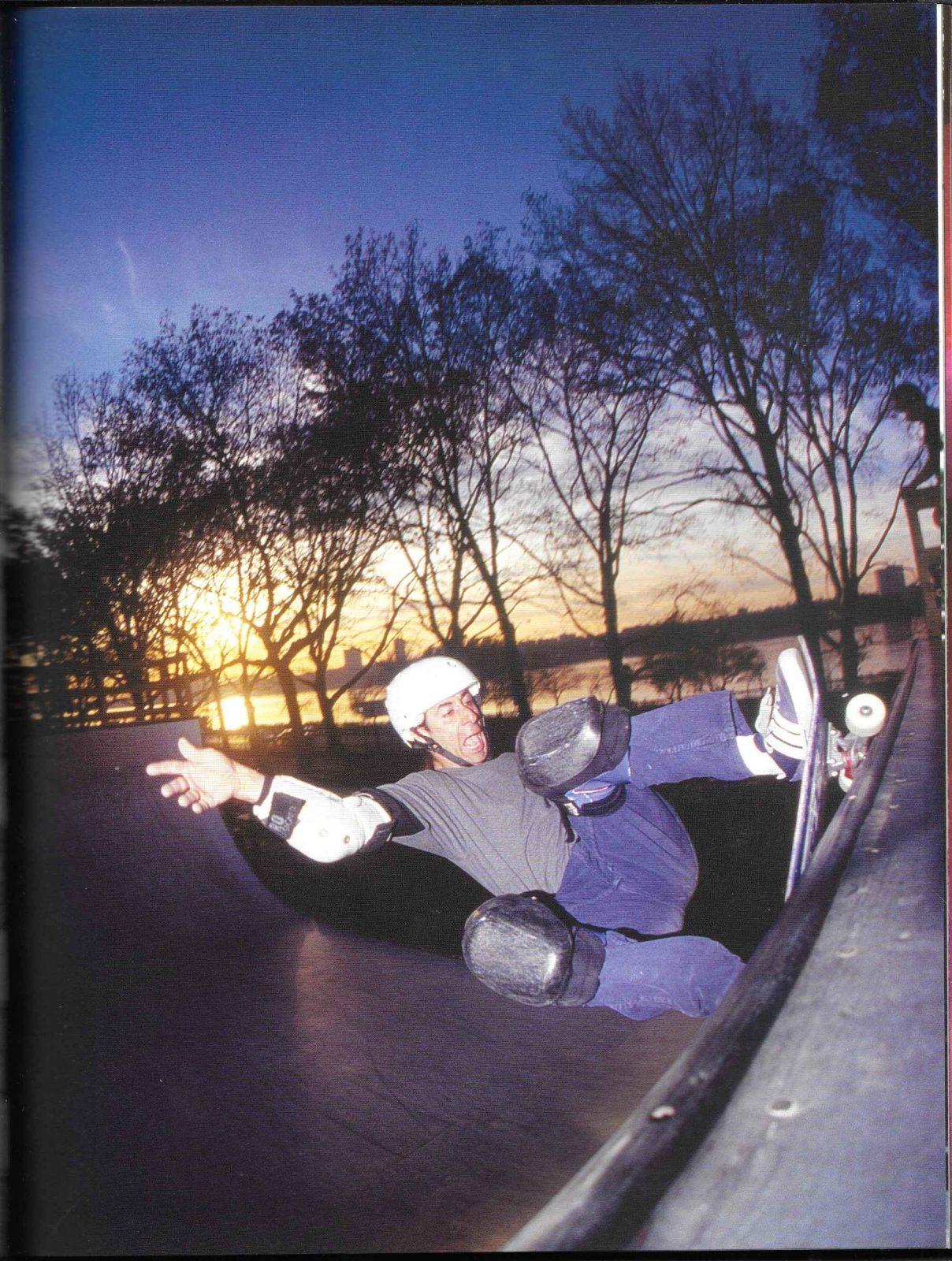If you love Upper West Side history, Greg Navarro’s new nine-and-a-half-minute documentary provides viewers with a unique perspective of the neighborhood during the ’80s and ’90s. Whether you skateboard or not, it’s valuable knowing the Upper West Side played a major role in shaping the culture of the skateboard world as it exists today.
Before the days of half-pipes and launch ramps, skateboarders had to improvise. Eli Morgan Gesner — a native Upper West Sider, the founder of Zoo York Skateboarding, and the mini-documentary’s storyteller — starts at one of his earliest haunts: 95 West 95th Street at Columbus Avenue. This is where he did his first backside hip trick, and where he cut his teeth skateboarding the ‘bank’ during his formative years.
Advertisement
We’re then taken to the West Side Marquis (70 West 95th Street), which Gesner describes as “kind of a scary spot” during the 1980s. “There were a lot of kids from the Upper West Side who lived in here who were skaters that had like one foot in skateboarding and one foot in becoming professional criminals, like thugs.” By 1989, this area was a skateboard haven where riders would be busting tricks all over. Gesner seems to particularly relish the railings at this location, where he landed his first ever ollie board slide.

Eli Gesner Archives: 94th Street Railing
Gesner sprinkles in a fun Upper West Side movie factoid about The Warriors (1979) and the “Can you dig it!” scene. When all the gangs (of kids) in NYC assemble at the beginning of the film, it’s scripted to look like Van Courtland Park in the Bronx, but it’s actually shot at Dinosaur Playground in Riverside Park at West 97th Street. We can dig it.
Riverside Park pops up a lot in this short doc. We see a flashback video of Riverside Park at West 95th Street where, for a week or two during the spring of 1986, there was a jump ramp and freshly painted benches they’d use to practice tricks like the axle stall and the boneless. We’re guessing it didn’t take long for park security to push them to find somewhere else to skate.
Advertisement
“This is one of the best skate spots in New York City,” say Gesner in regards to the American Museum of Natural History at 200 Central Park West. “There’s so many possible [tricks] to do.” He considers this location a personal triumph as it’s emerged as a prime skateboard location that’s still used today.
Gesner goes on to give homage to legendary UWS skater Andy Kessler, who the skatepark at West 108th Street is named after. He spends time at this location describing his early days and being mentored by Kessler.

Andy Kessler in Riverside Park. Photo by Ivory Serra.
Gesner brings us to the Soldiers’ and Sailors’ Monument, which was one of the earliest ‘parks’ he and other skating peers would throw down at. Known for its tough terrain, he liked to practice slappy tricks here.

Eli Gesner at the Soldiers’ and Sailors’ Monument
We end with the “fall from innocence,” as Gesner described it. Andy Kessler, who was known in the skate world as the Godfather, branded the drop at 91st Street and Riverside Park as Suicide Hill. This is a rite of passage for Upper West Side skaters to this day.
My advice if you’re nervous about riding Suicide Hill for the first time: get a lookout and ride late at night so you don’t hit any pedestrians walking up the hill. And wear a helmet, please.
The documentary can be viewed here.


Boarding is a fun activity for the young. The City spent big dollars to create facilities for boarders in Riverside Park. I wish they would use those facilities instead of our historic monuments to which they have caused significant damage.
West 90s Neighborhood Association
Soldiers and Sailors Memorial Association
Hi Neil,
You will be heartened to learn that skateboarding is for all ages, backgrounds and ethnicities, enriching our neighborhood and integrating cultures. I find the thought of segregating skateboarders away in parks to create divisions in our community for what is a sport and creative outlet. I find your views to be opposing to the west 90s neighborhood’s ‘why we exist’ page.
For your comment relating to ‘significant damage’ to historic monuments; i think you will be learned to discover that any cosmetic damage you see pales when compared to the effects of the environment; erosion, freeze-thaw, pollution discoloration and corrosive impacts from salts on these structures and facades can be clearly seen, juxtaposing with the temporary waxing of curbs and edges bequeathed by skateboarders.
Paul – Founder of UWS Skateboarding Association. est. 2022
With respect, I find your response disheartening. My comment was not intended to segregate or divide our neighborhood. Rather, to the contrary, it was intended to preserve it. The Soldiers and Sailors Monument memorializes the brave soldiers and sailors who fought for the Union in the Civil war and gave their last measure of devotion to preserve our Union and our democracy. Since its dedication in 1902, the meaning and importance of the Monument has extended beyond the Civil War, to all the men and women of our armed forces who died in defense of our country and the democratic principles and ideals on which our nation was founded. I don’t understand how you can think that your group’s personal gratification in creating and practicing boarding tricks that scar and cause damage to its plaza, rails and steps are not acts of disrespect to the memories of those brave heroes. Would you think it’s ok to do such things on the grave markers in a cemetery or on our national memorials in DC ? Hopefully you will be more mindful in the future about your activities regarding all of our important monuments, Grant’s Tomb included. Especially in these times, we need to remember the greatness of our past, put aside our differences and work together for the common good. As President Lincoln admonished, “a nation that does not honor its heroes will not long endure”. We are determined to endure and call on you and your fellow boarders to do your part in helping all of us neighbors on the Upper West Side to do that.